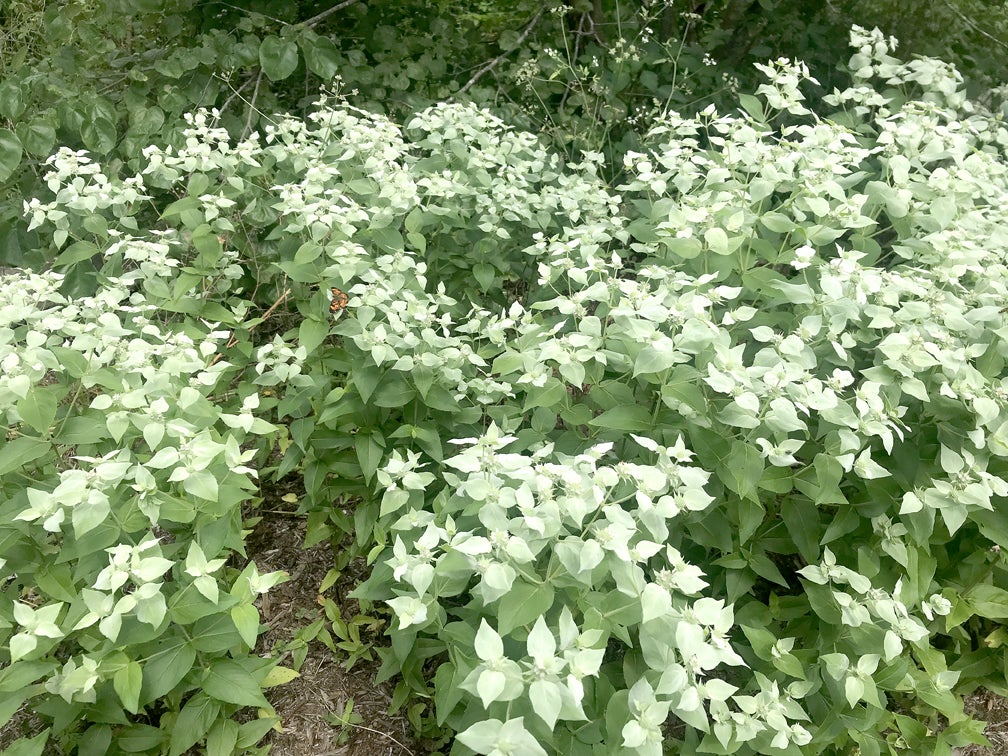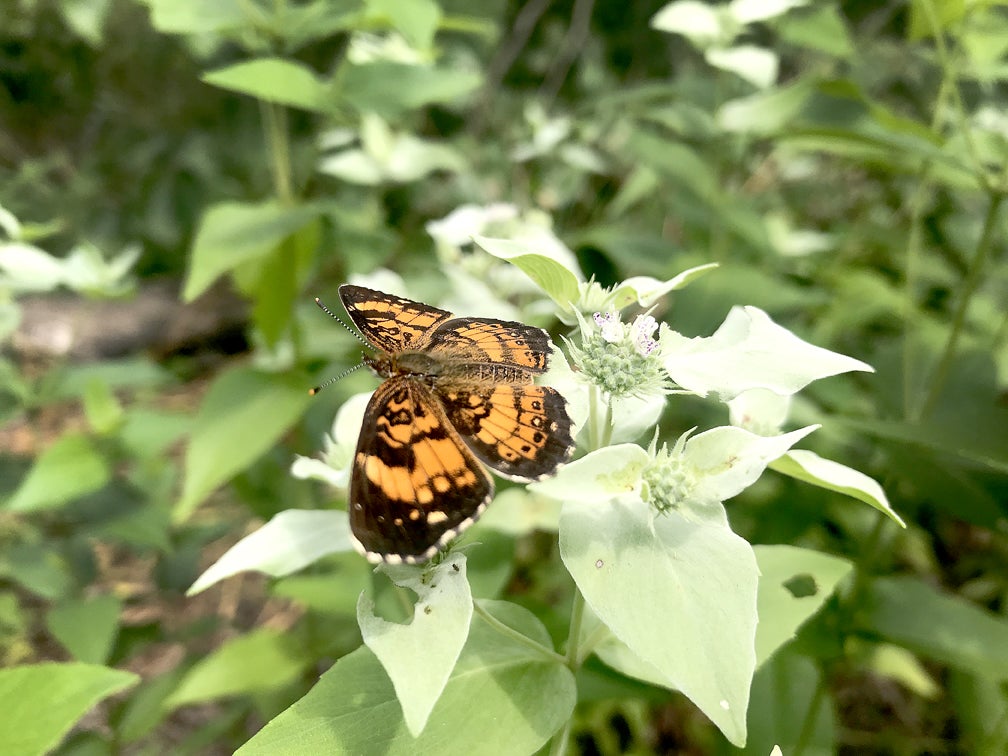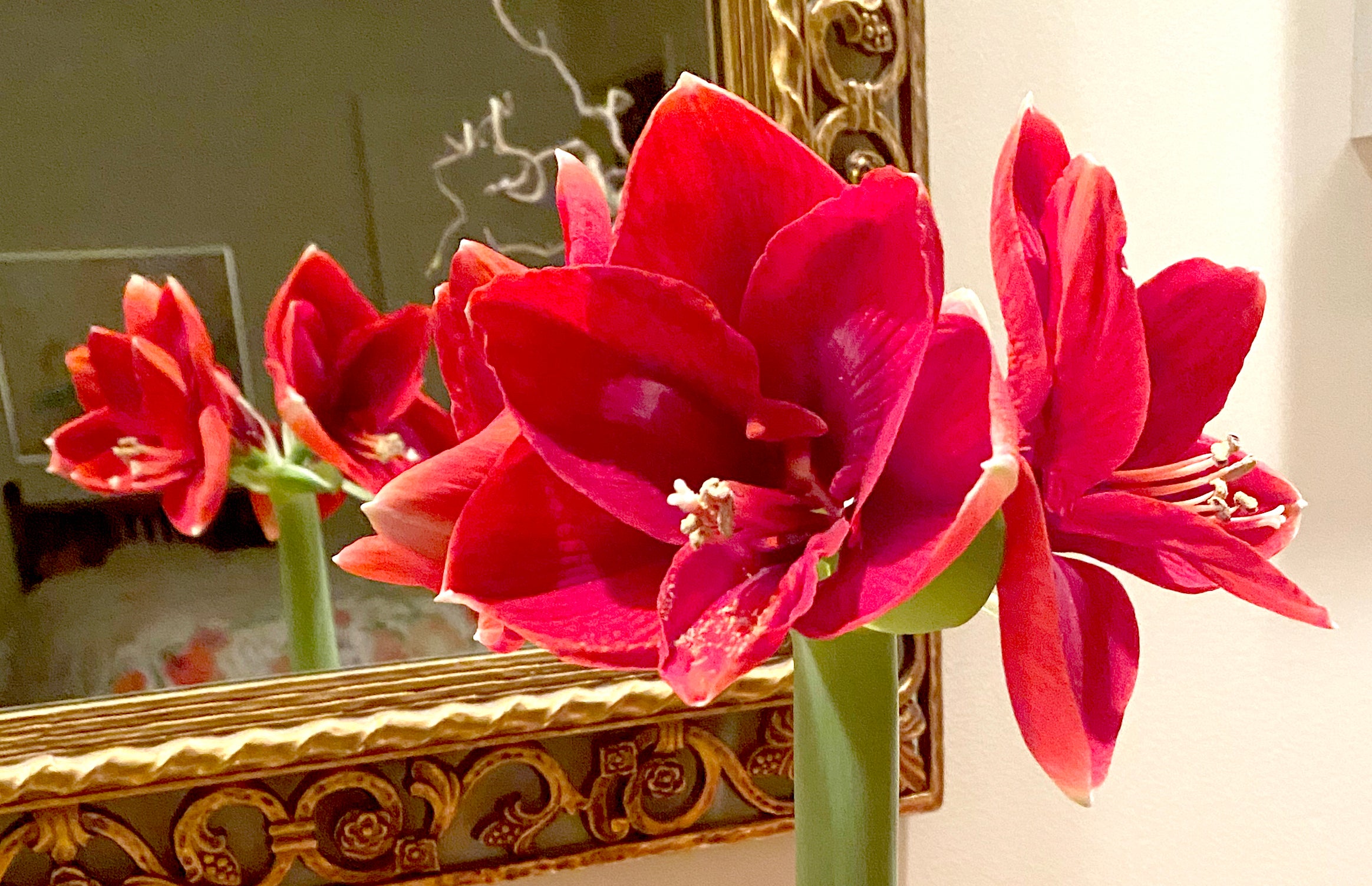Pycnanthemum is for pollinators — and a wide variety of them! The aroma is nice for humans, it’s one of the best nectar sources for native butterflies, and beneficial bees and wasps love it.
It is a genus of the mint family, so you know to give it plenty of growing space and to plant in mass because a few plants will go a long way! We have found no plant to be more attractive to beneficial garden insects than North American and Kentucky native, clustered mountain mint or blunt mountain mint (Pycnanthemum muticum).
In a 2013 pollinator plant trial by Penn State, Pycnanthemum muticum was rated the No. 1 plant for longevity of flowers and also No. 1 for diversity of pollinators. It’s no surprise that the two go hand in hand.
In a two minute period, 78 insects (including 19 bees and syrphid flies) visited the plant. Loaded with pulegone, mountain mint can be rubbed on the skin to repel mosquitos too. If you need more convincing, it is also deer resistant and makes a great cut flower, where the fragrance can be enjoyed from a vase.
Pycnanthemum was discovered in Pennsylvania by French botanist Andre Michaux in 1790 and is indigenous to bogs, savannas, low meadows, low woods and ridges. The name is derived from Greek words pyknos (dense) and Anthos (flowered). Muticum is Latin for blunt, which refers to the flat bracts at the top of each stem. The bracts are silvery-blue-green-white colored and topped with tiny white and lavender flowers. The bracts are what make this plant pop in the garden and are even more showy when combined with native pink or red blooms of coneflower or monarda and/or other blue-green foliaged plants. There really isn’t a bad combination with this plant.
The foliage stays healthy looking into November and the entire plant is very pest resistant. It reaches 2 to 3-feet high and can spread infinitely, but spacing of about 2 to 3-feet is great for new installations.
As the plant grows in the spring, it can look a little weedy, but patience pays off in big rewards. By summer, the plant will be absolutely buzzing with bees, beneficial wasps, moths and butterflies among the beautiful bracts.
Being in the mint family has it’s advantages for spreading over slopes and extreme sites. It’s rhizomatous spread helps hold ground without being overly aggressive. Sun, shade, moist, dry — this plant is happy just about anywhere you decide you want it, meaning it can handle drought, rain gardens and Kentucky’s infamous clay soil.
If you want a plant that does it all, this workhorse will not disappoint.












